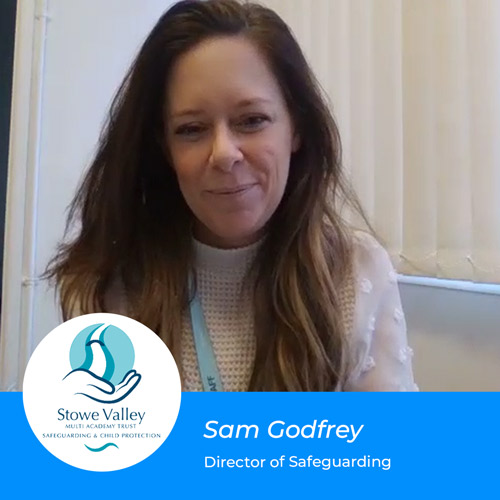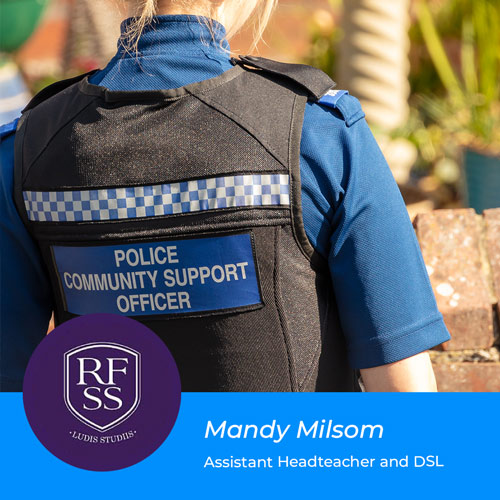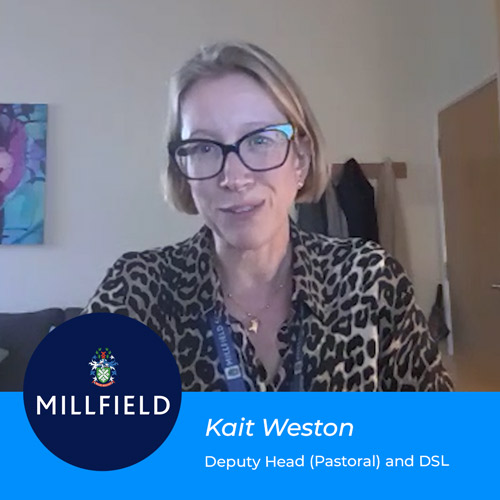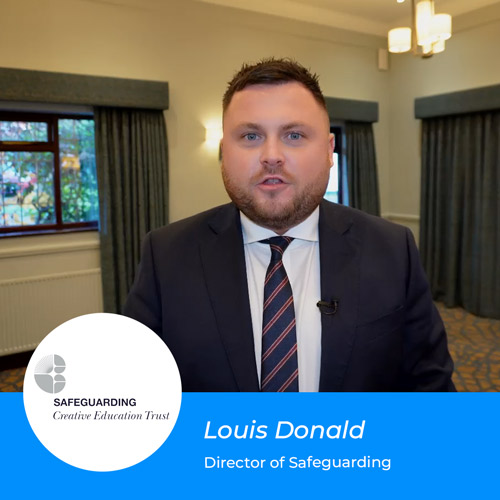Contextual Safeguarding in Action – Empowering our Student Voice to Create Safer School Communities
Contextual Safeguarding – a meaningful progression for our Learning Journey
Contextual safeguarding is an empowering, child-centred approach that enhances the way TASIS, The American School in England, navigates safeguarding students. Continuing to recognise the vulnerability of young people in a range of social contexts, including school, is important for us, as we know students may not always be vulnerable in just one environment. This evolving and forward thinking approach to safeguarding has the capacity to allow school leaders and Designated Safeguarding Leads to learn and understand how they can proactively keep their school communities safe at a greater depth than reactive safeguarding practices. Perhaps more importantly, contextual safeguarding can authentically provide schools with the opportunity to teach students how to take responsibility for creating safer communities. This potential benefit cannot be underestimated and emboldens all within a community to play their part in creating safer and healthier communities.
The development of contextual safeguarding has allowed TASIS to learn more about and reflect more deeply on the answers to the following key questions:
- How do we know our school community is safe?
- What safeguarding issues do our students really face?
- How effective are safeguarding interventions?
- How are we providing authentic opportunities for our students to own the concept of safeguarding and to be principled, open-minded and compassionate citizens?
The Student Voice – Why
Evidence suggests that students may be reluctant to share sensitive safeguarding issues with teachers face to face because their social conditions favour them to stay silent (Carlene Firmin 2017). The Student Voice, in partnership with TASIS, have developed a contextual safeguarding information sharing tool that seeks to provide opportunities for student peer group engagement with a view to developing a stronger school culture. The Student Voice seeks to bridge this perceived communication gap by listening to students and allowing schools to respond to their concerns effectively; with the overall aim being to proactively identify and intercept safeguarding issues, and to ultimately protect our students and provide them with a forum to play their part in this process.
The Student Voice – What
The Student Voice gives students the platform to share information about how safe they feel on campus and in the local area through interactive maps. Additionally, due to the opportunities for learning we have all experienced through our response to the coronavirus pandemic, we are more aware that students take time to adjust to transformational cultural changes such as online home schooling, a new routine, and limited social contact. With the advent of this situation, we have added an interactive world map where students can share relevant concerns that assists us in staying connected with our students, adapting our support as a school and respond effectively no matter where in the world the student may be.
The Student Voice– How
Students with information to share can access these maps and report on any area outlined. They are asked to rate the safety of an area as GOOD, OK or BAD,and to provide further detail about their rating. All submissions are anonymous, unless the student elects to share their identity.
Students are encouraged to share what is working well, in addition to areas and issues of concern. In the time between May 2019 and March 2020 we received on average 30 submissions per month, 59% of which were positive. It is fair to say that we learned just as much, if not more, from these positive reports than the issues of concern that were raised. We have learned that we often take for granted what is working well and that doing more of what works well can make a tangible difference in the life of our students.
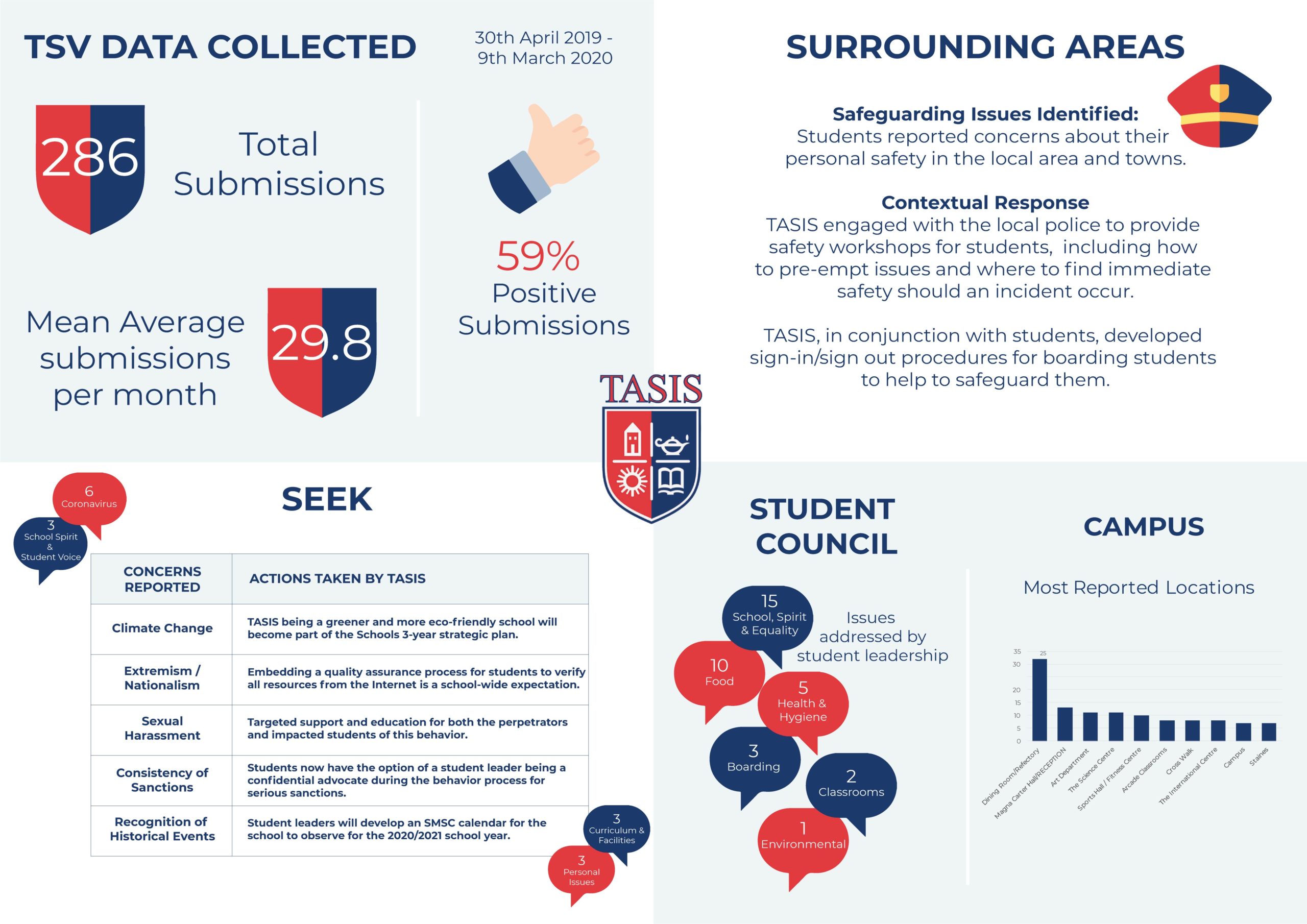
The Student Voice: Positively informing our contextual safeguarding and school community
As the DSL, I receive an automated email alert that a submission has been made. This is then processed using the local authority social care model to categorise the issue and assign actions which are logged with a time and date stamp. If appropriate, information is shared with the local authorities through a multi-agency approach to addressing issues. In our experience, the police and social care are extremely grateful and very supportive of such information sharing and collaboration.
As DSL, I have the capacity and control to create and run reports on any aspect of the data gathered, all of which can be automatically downloaded into a csv. file. This facility allows me to assess if interventions have been successful overtime and to provide real evidence for our school community, Governing Board and Inspecting bodies.
The Student Voice: The role of our student leaders
TASIS runs a robust student leadership program throughout the school, with elected students representing their peers and contributing to the running of the school. The Student Voice tool has a specific option for students to share information about school life to their Student Council, who are then responsible for working with the school to address issues and ultimately share the outcome with the student body. All Student Council members receive specific safeguarding training and I am copied on all such student submissions to ensure that confidentiality and safety is preserved. The positive effect and the sense of ownership that this has had on our student body has been profoundly beneficial. Whilst The Student Voice is still a new concept to us, the student council are proudly making key decisions about how to prioritise and respond to student suggestions and the student body are seeing their concerns addressed and their positive comments acknowledged.
The Student Voice: The Potential
The potential for The Student Voice to assist schools in the development of safer communities and to teach students how they can safely contribute to making society safer is significant. Currently, all electronic safeguarding systems focus on listening to adults in the community. However, as Carlene Firmin (2017) suggests, students may not readily share such information with adults.
The Student Voice is a genuine attempt to place the student at the centre of school communities, to provide them with opportunities for true advocacy through authentic voice and to challenge them to play their part in the development of their school life. Encouraging students to understand such responsibilities and expectations whilst at school has the capacity to promote a safer school community, and as these students enter mainstream society they will do so with greater knowledge and experience of how to engage as an emboldened and responsible citizen.
Jason Tait is the Director of Pastoral Care and Designated Safeguarding Lead at TASIS, The American School in England in England and advisor to The Student Voice.

